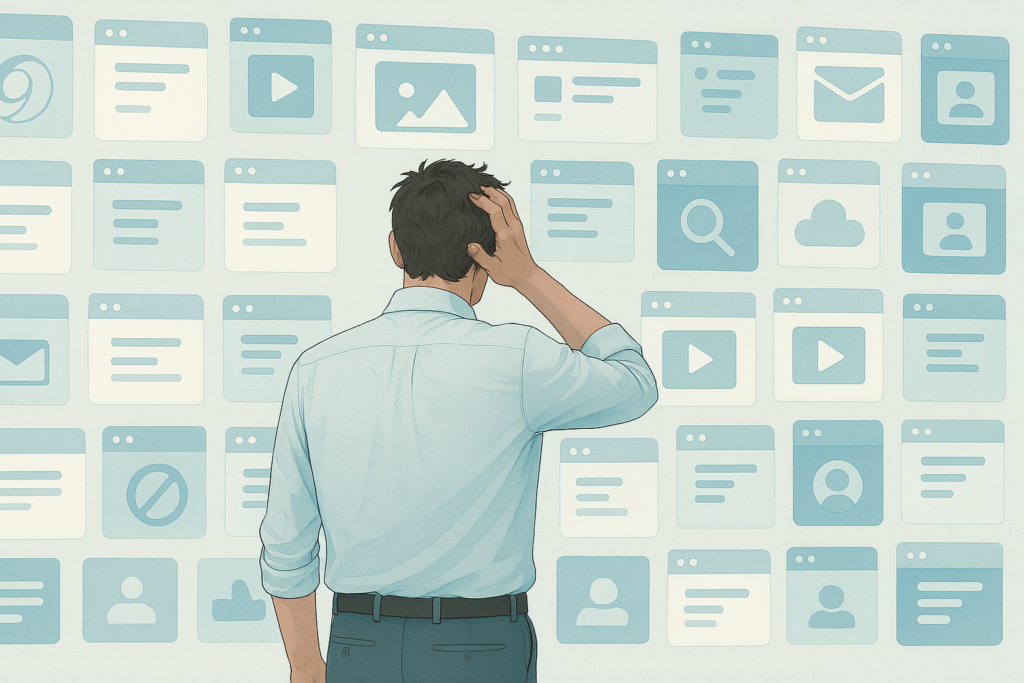Tech Debt Is Why You Can’t Find Your W-2

We have a week to file our taxes which should be plenty of time.
And it will be, provided you remember the email address you used to sign in to the tax filing software last year, then remember which password you used and where you stored the W-2 form you downloaded three months ago and where you filed the 1099s and the donation receipts, and on and on.
If that sounds exhausting, it is.
But this is not a senior moment. It’s tech debt.
So what? Why worry about tech debt when you’re going to need every spare moment to file your taxes?
Because, if this isn’t addressed, consequences can be both real and unpleasant:
- You’ll be locked out when it matters most. When you really need access, tech debt leaves you stranded.
- You’re more vulnerable to scams and hacks. Old logins, reused passwords, and expired emails are a welcome mat for attackers.
- You waste hours putting out fires. You should be doing your taxes instead of hunting through three email accounts for a login link.
- You fear upgrade will break everything. So you stick with outdated systems and growing risks.
This is not your fault. Every device or browser you use offers shortcuts to save you time. But those shortcuts all lead to dead ends when you later need to return to a website or app.
I promise you, though, there is hope.
What is Tech Debt?
Tech debt is a term familiar to Product teams, software developers, and other similar workers.
It refers to what happens when a team prioritizes speedy delivery instead of producing high quality code. Tech debt crops up when essential work is delayed or omitted so a project can be shipped with the unintended consequence of causing more work later to correct what wasn’t done before.
Big deal, you may say. You’re not a software engineer or a Python coder. How bad could it get?
That’s what Southwest Airlines thought, too.
Days before Christmas 2022, four years after an internal review warned that its employee scheduling software could not handle “a major disruption,” Southwest faced exactly that. A massive winter storm threw pilot and crew schedules to the wind, and employees tried to manage with Excel spreadsheets and phone calls.
They failed, and Southwest wound up reimbursing affected travelers more than a half a billion dollars. It also had to commit to a three-year IT modernization plan and complete quarterly audits.
A big deal, indeed.
Where to Begin
We all build our digital lives piece by piece – a shortcut here, a quick workaround there – until one day we realize we have a bunch of mismatched tools and forgotten accounts.
While we all face tech debt, how concerned should you be?
Ask yourself these five quick questions:
- Do I reuse the same few passwords everywhere (or do I even know where all my passwords are saved)?
- Have I tried to reset a password but the expected email or code never appeared?
- If I lost my phone, would I panic about losing access to key accounts?
- If I had to access my most important digital documents right now, do I know where they are stored?
- Have I delayed or avoided doing something important (like taxes) because I couldn’t access an account?
If you answered “Yes” to even a couple of those, it’s a clear signal your digital life needs some attention. Tech debt can be fixed, and I want to help you deal with it.
I’m offering to help three readers take a fresh look at their personal tech stack, map out what’s working (and what’s not), and create a simple, doable plan to reduce tech debt over time. If you’re interested, connect with me by email, on WhatsApp, or on Signal.
You’ll get no pressure, no judgement, and no sales pitch.
Also, no tax advice.
You will, however, get a chance to finally feel in control of your digital world again.
Reach out, and let’s get started.


